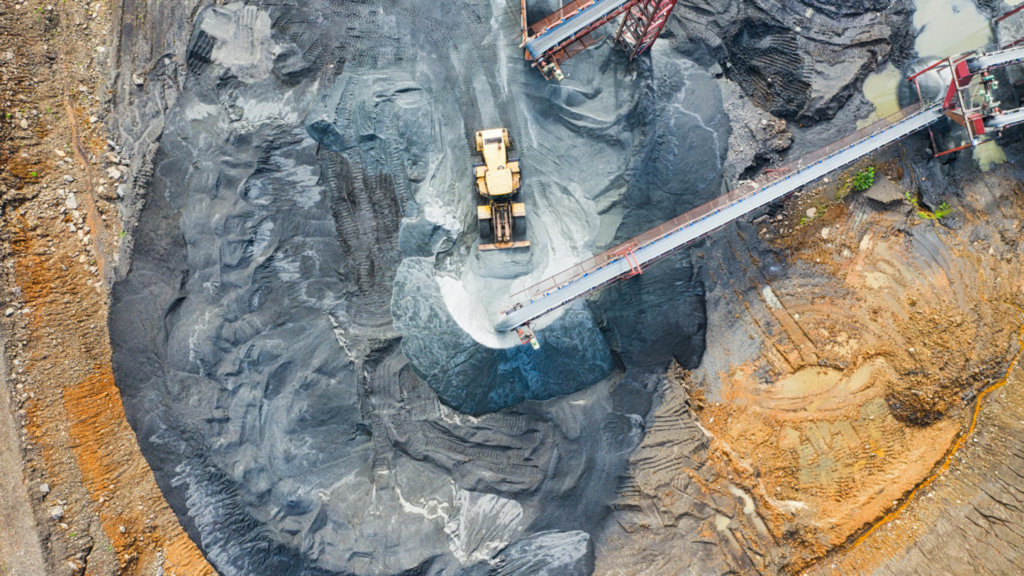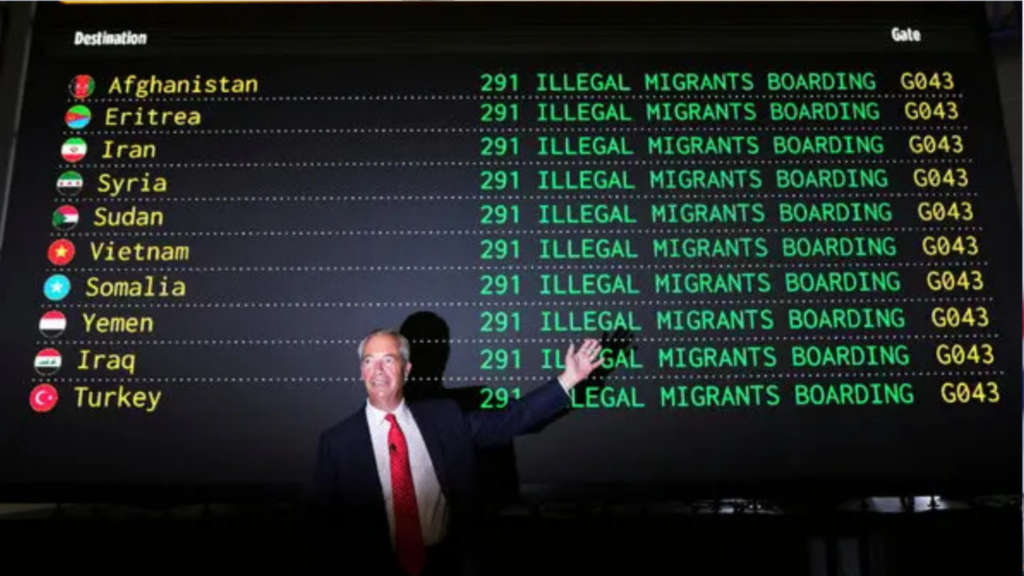How US Politics is Inadvertently Shaping the New World Order
Trump is testing US supremacy. And the days of a reliable US ally are fading. The question is, then, if the old world order is dead, or dying, what will replace it?
With the cost of US trade disruption priced in at just over $1,200 per US household (York and Durante, 2025), containing the damage is a top priority amongst global policymakers. A number of countries, such as Brazil, Japan and Vietnam, have suspended tariffs of their own against the US, prioritising negotiations instead to achieve an economic reprieve during the new 90-day tariff suspension window. Meanwhile the response from core trade partners like the EU, Canada and China has varied widely, with the latter now engaged in a trade war with broader ramifications for the global economy.
The speed of changes, alongside the uncertainty and unpredictability surrounding the evolving situation, is leading to questions of a changing world order (Nye, 2025b). Daniel Gros (2025), director of the Institute for European Policymaking at Bocconi University, suggests an EU-led coalition could lead efforts to promote participation and cooperation on the world stage, shoring up stability in light of recent uncertainty in global markets. This sentiment is shared by the EU’s high representative for foreign affairs and security policy, Kaja Kallas, who notes the EU bloc’s desire to establish and strengthen international relationships between a so-called coalition of the willing—a euphemism for countries willing to work together and play by the rules (Kallas, 2025a).
Recognising the difficulties ahead, however, Kallas, in a speech to the Berlin American Academy in March, discussed a new “path” for international relations as US actions on foreign policy and trade feed uncertainty in global markets. The high representative for the EU notes this as an emerging “new world order” (Kallas, 2025b). Could comments of a new path suggest that our world is divided? And, if so, what could such a new world order look like?
The aim of this piece is to briefly touch on the evidence suggesting the world is shifting towards multipolarity. This is the idea that instead of a single, dominant world power (i.e. the US) there are multiple groups with the power to influence change in the world economy. This article will begin with how the US could be receding into a more domestically-orientated role, prompting a shift in the global axis of power. This can help to connect recent comments by Kallas with an emerging multipolar world order, as power plays threaten the stability of the global economy. Through this lens, we find a key flashpoint for business in the global supply of rare earth metals, which provide leverage in negotiations on the world stage, amid a growing movement to secure economic partnerships outside of the US that is transforming the geopolitical landscape.
The Trump Effect: US Dominance Under Question
The EU has long been a staunch ally of the US. But Trump’s desire to rescind from NATO and Ukraine commitments, on top of tariffs, places the US-EU relationship at risk. In particular, by using NATO spending commitments as leverage, Trump has proved that this style of transactional politics can be a weapon used against rivals and allies alike. This has raised broader concerns over the future of international security, as Trump’s unpredictability undermines America’s position as a reliable global authority.
Global affairs think tank, the Stimson Center, discussed a US exit in a research piece last year. Called the “Trump Shock,” a “relatively swift” exit from EU defence commitments would send member states scrambling to fund NATO in the advent of Russian aggression (Ashford and Rawlins, 2024). By forcing the EU to fund defence, the US not only undermines this key partnership with the EU, but also threatens its global strategic position. As Stimson researchers note, this scenario follows a similar trajectory to the first Trump administration, whose patchy and incoherent EU policy weakened US foreign relations and vast influence overseas.
A swift exit remains to be seen, since Trump is yet to officially announce cuts to NATO. What we have observed, however, is a coordinated response from the bloc in light of threats to NATO spending, with pledges for higher defence spending across the EU. Furthermore, echoes of support for an EU coalition-of-the-willing are coming from other world powers too, such as Canada and the UK, who seek greater stability in an uncertain global environment. Therefore, the new path for international relations that Kallas noted could be a road towards multipolarity, as key economic partnerships and trade agreements are being finalised, or at least considered, with a notable absence of the world’s largest economy.
Multipolarity and Shifting Axis of Power
The 2022 Regional Comprehensive Economic Partnership (RCEP), the world’s largest free trade agreement, between 15 economies including Australia, China, Japan, New Zealand and South Korea, displays a growing trend in the size and power of regional and economic blocs that excludes the US as a major partner (RCEP, 2013; Ministry of Trade and Industry, 2022). The BRICS group, originally comprised of Brazil, India, China and South Africa, is another intergovernmental organisation exemplifying this trend. Earlier this year, the burgeoning group welcomed Malaysia and Indonesia to its ranks in an effort to deepen cross-regional cooperation, strengthening the economic and political positions of nations involved who seek to adapt to strategic challenges in the global environment (Ibrahim, 2025).
But despite these positive developments, however, rifts remain within these key groups. Rapid change in the global economy is overtaking the capability of some nations to come to agreement on core issues, such as the reforming of the UN Security Council, that Brazil’s foreign minister at a BRICS meeting in April 2025 stresses as a “serious concern” preventing accord within the group (Paraguassu, 2025). New economic partnerships still must overcome the challenges of fractious politics, even within these emerging power groups. The difficulties facing the global economic community could, therefore, be leading to a stall in globalization, as the reality of a divided, multipolar world economy becomes more acute.
The Swiss KOF index (Fig. 1, KOFGI), a popular measure of globalization, reveals that world is struggling to overcome the level of global interconnectedness and connectivity first observed in 2017 (61). Coincidently, this is the era of the first Trump presidency. We might then ask if Trump is a countervailing force to the drivers of globalization? While it is difficult to make such an assertion, the paradox of globalization, however, is that the spread of harmful changes in the world economy may also be a result of the process itself: Trump and other populists—political organisations that pick on the popular mood of the people—blame globalization for the loss of jobs and industry; democratic institutions accuse globalization for the spread of pernicious forms of politics, like protectionism and populism (Nye, 2025a).
As we struggle to overcome the level of globalization observed eight years ago, it is worth noting that there has been steady, incremental growth in global investment as a per cent of world GDP since 2010, which may reflect the trend in expanding regional and economic partnerships highlighted earlier in this piece (Fig.1). In a multipolar world order, we might expect cross-regional and -border investment and trade to continue, given the importance of international finance and commodities from overseas. However, while nations struggle to overcome divisive issues, and globalization stalls, the growing complexity of the geopolitical environment and difficulties with global governance will prove challenging for international business and investment to navigate. With the speed of change and uncertainty currently in the world economy, what area or sector might offer a glimpse of certainty on this road to multipolarity?
Asia, REE Trade and Multipolarity
One signal among the noise for global business and investment is the rare earth elements (REE) trade. Demand for the group of 17 elements has grown significantly in recent years as the properties of these rare earth metals prove essential for a diverse range of modern applications, such as the chips in hi-tech goods and low-carbon technologies. Therefore, control over these crucial commodities provides leverage on the world stage.
China has an overwhelming command of the REE supply chain with 69% of global production and 37% of the reserves (Fig. 2). This is perhaps why China has been a high-profile participant in key emerging trade agreements and partnerships, like BRICS and RCEP, since such an economic backdrop strengthens its negotiating position. Meanwhile the US, its economic partner and rival, lacks such a firm position in the REE trade. This is why critical minerals and REE where essential to the Ukraine deal made recently as the US continues to diversify its supply chain from Chinese production.
In a multipolar world, no one economy would lead. China has repeatedly noted its growing power and expansion plans do not coincide with a desire to overtake the US as the world’s superpower (Li, 2015). Maintaining an economic relationship with the US is important for stability, since China still relies on US demand for exports. Meanwhile the US still needs Chinese critical minerals and rare earth metals for its growth and development, which the Ukraine deal alone would not suffice to provide.
Conclusion
The US superpower status is being questioned. New and emerging powers are seemingly creating an order without the authority of a dominant US. Even allies like the EU are looking for routes around an unpredictable US administration. But one thing they cannot do without is the US dollar, a pillar of American brawn on the world stage. Its status as the worlds reserve currency, which almost all overseas transactions between countries are made with, is supported by an independent monetary authority not (yet) under the control of the new US administration. And while Trump is testing the dollar’s privileged benchmark status, it is unlikely we shall see such a monumental shift in international finance in the short-to-mid term.
That said, as we await developments in the 90-day suspension window on tariffs, what is clear is that global nations are making movements around an unreliable US authority. And as power slips away from the US and into the burgeoning economic and regional blocs, particularly the East Asia power structures, a multipolar world order is a growing possibility.
References
Ashford, E. and Rawlins, M. (2024) ‘American Roulette: Scenarios for US Retrenchment and the Future of European Defense • Stimson Center’. Stimson. Available at: https://www.stimson.org/2024/american-roulette-scenarios-for-us-retrenchment-and-the-future-of-european-defense/ (Accessed: 17 April 2025).
Gros, D. (2025) Can a Global Trade War Be Avoided? | by Daniel Gros, Project Syndicate. Available at: https://www.project-syndicate.org/commentary/the-right-response-to-trump-tariffs-can-avert-a-trade-war-by-daniel-gros-2025-04 (Accessed: 22 April 2025).
Ibrahim, A. (2025) The Global South’s Path to Economic Resilience, Project Syndicate. Available at: https://www.project-syndicate.org/onpoint/what-global-south-middle-and-emerging-powers-want-by-anwar-ibrahim-2025-03.
Kallas, K. (2025a) Fireside Chat: Kaja Kallas on the US-EU Relationship | Hudson Institute [Discussion]. Hudson Institute (Fireside Chat). Available at: https://www.hudson.org/events/kaja-kallas-high-representative-european-union-foreign-affairs-security-policy-peter-rough (Accessed: 22 April 2025).
Kallas, K. (2025b) Keynote speech by High Representative / Vice-President Kaja Kallas on receiving the Henry Kissinger Prize from the American Academy, Berlin | EEAS, EEAS. Available at: https://www.eeas.europa.eu/eeas/keynote-speech-high-representative-vice-president-kaja-kallas-receiving-henry-kissinger-prize_en (Accessed: 22 April 2025).
Li, H. (2015) ‘The Chinese Model of Development and Its Implications’, World Journal of Social Science Research, 2(2), pp. 128–138.
Ministry of Trade and Industry (2022) ‘RCEP’. Government of Singapore. Available at: https://www.mti.gov.sg/Trade/Free-Trade-Agreements/RCEP (Accessed: 30 April 2025).
Nye, J.S. (2025a) Does Globalization Have a Future? | by Joseph S. Nye, Jr., Project Syndicate. Available at: https://www.project-syndicate.org/commentary/future-of-globalization-trump-china-tariffs-immigration-crackdowns-by-joseph-s-nye-2025-02 (Accessed: 24 April 2025).
Nye, J.S. (2025b) How World Order Changes | by Joseph S. Nye, Jr., Project Syndicate. Available at: https://www.project-syndicate.org/commentary/world-order-what-it-is-and-how-it-could-change-under-trump-by-joseph-s-nye-2025-04 (Accessed: 22 April 2025).
Paraguassu, L. (2025) ‘Growing BRICS group shows internal rifts as ministers fall short of joint statement’, Reuters, 29 April. Available at: https://www.reuters.com/world/brics-ministers-fail-reach-joint-statement-brazil-warns-against-protectionism-2025-04-29/ (Accessed: 30 April 2025).
Posen, B.R. (2003) ‘Command of the Commons: The Military Foundation of U.S. Hegemony’, International Security, 28(1), pp. 5–46.
RCEP (2013) The Regional Comprehensive Economic Partnership (RCEP), ASEAN Main Portal. Available at: https://asean.org/our-communities/economic-community/integration-with-global-economy/the-regional-comprehensive-economic-partnership-rcep/ (Accessed: 29 August 2023).
York, E. and Durante, A. (2025) Tracking the Economic Impact of the Trump Tariffs, Tax Foundation. Available at: https://taxfoundation.org/research/all/federal/trump-tariffs-trade-war/ (Accessed: 22 April 2025).



